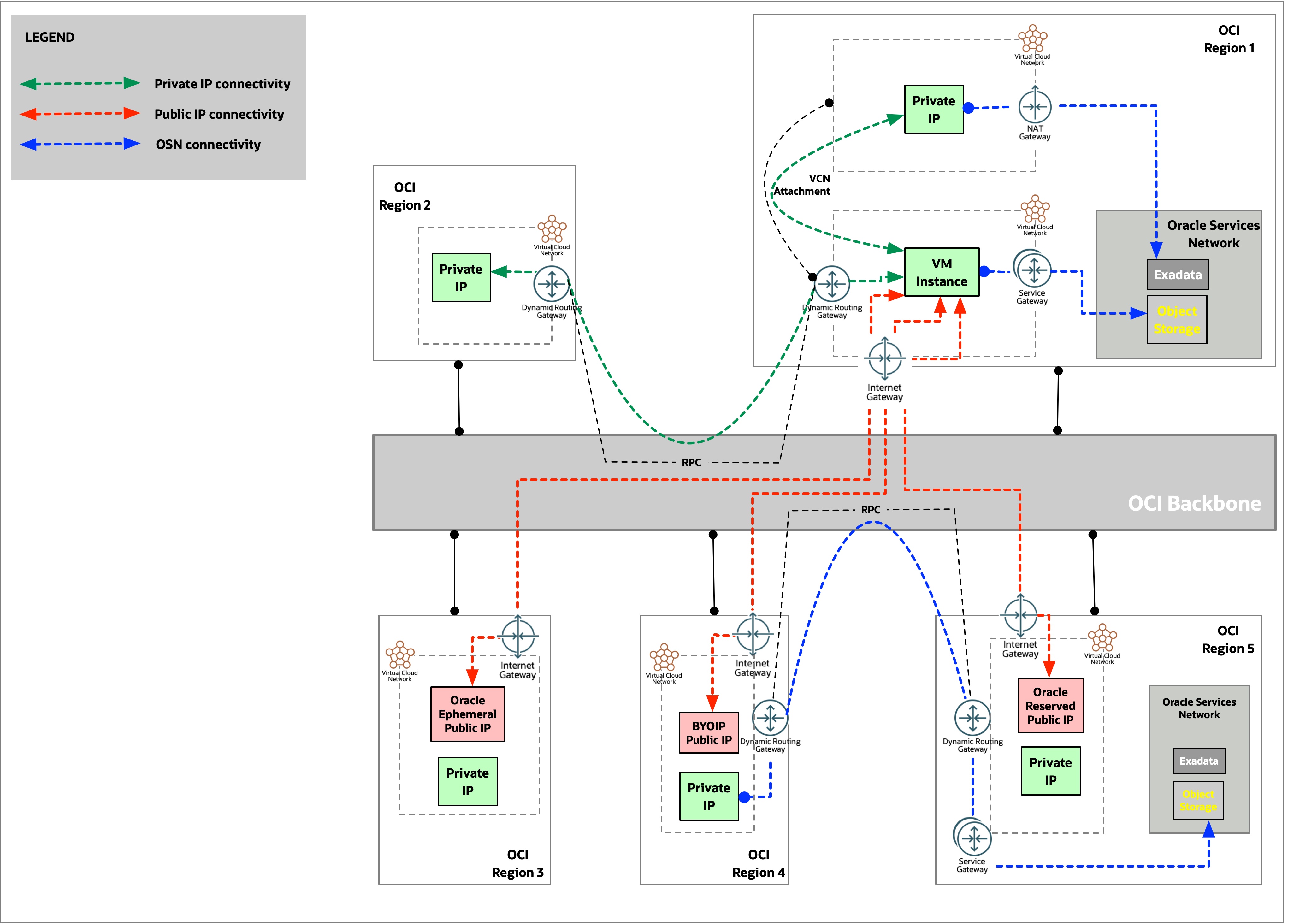The Oracle Cloud Infrastructure (OCI) backbone is a dedicated, secure, and highly available network used to interconnect OCI regions across the globe. By default, your inter-region public and private IP traffic, inside the same realm, travels across the OCI backbone, not the internet. This structure provides consistent, inter-region performance for bandwidth, latency, and jitter when compared to the public internet. The OCI backbone is ideal for supplying the consistent connectivity that your workloads need and enables use cases such as disaster recovery, real-time replication, and more.
Why the OCI global network matters
We’ve built the OCI global network with security, availability, capacity, and performance in mind. Oracle and its thousands of customers depend on this interconnected network for their mission critical applications.
Security first
All organizations are required to protect their data and the data of their customers. Nowhere is data more exposed than when traveling around the globe through the internet. All communications traversing the OCI backbone are secured by industry-standard encryption protocol, MACsec, which helps ensure confidentiality for all transactions between Oracle data centers. With this level of encryption, your data is protected while in transit on the backbone.
Availability
Connectivity is the lifeblood of an organization, especially between locations separated by thousands of miles. Interruptions, circuit failures, and other outages can happen anywhere, and fixing them takes time. For this reason, the OCI backbone already includes redundant paths, diverse fiber routing and different entry points to the OCI backbone. It’s designed to automatically and rapidly route around failures to maintain the availability of the connections between the data centers. If failure occurs, applications that use the backbone are rerouted to new paths without being disrupted.
Capacity
Data stored in the cloud is growing exponentially, so more data flows between regions every day. We’ve already planned for this increase. OCI’s backbone throughput is measured in terabits of capacity today with room to spare. Oracle also continuously monitors the performance and throughput of all backbone links and adds bandwidth when needed. This process helps ensure that you’re not the first to notice bottlenecks.
Performance
The performance of the network is critically important to enterprise applications. It’s not just raw speeds and feeds that we’re talking about, but the consistency of the performance—latency and jitter—that matters. By transiting the OCI backbone (as opposed to the public internet), you can almost always reduce latency when traversing the globe. Take a peek at our Inter-region Latency Dashboard on the Oracle Cloud Console to view latency numbers between our regions.
How you automatically use the OCI backbone (but might not know it)
Each region’s public IP prefixes are advertised across the backbone. By default, the backbone is the preferred path over the internet without any extra customer configuration. When traffic is exchanged between two virtual cloud networks (VCNs), typically through remote VCN peering, or public endpoints in different OCI regions with public connectivity, traffic automatically traverses the backbone.
The Oracle Services Network (OSN) is designed to host Oracle services on OCI that have publicly reachable endpoints, such as Object Storage, Autonomous Data Warehouse Cloud, and Oracle Analytics Cloud. Each region’s publicly reachable service network routes are also advertised and routed across the OCI backbone. In addition, many of these services are available through private IP.
As highlighted in the following diagram, the following public IP addresses automatically traverse the OCI backbone:
-
Oracle ephemeral public IP addresses
-
Oracle reserved public IP addresses
-
Bring Your Own IP (BYOIP) public IP addresses
-
Public IP addresses for Oracle Cloud services, such as Autonomous Warehouse and OCI Object Storage
How you can ensure that your traffic uses the OCI backbone
You can communicate between OCI regions directly using private IP resources defined in each VCN without the need to hairpin the traffic through on-premises or route it through the internet. OCI customers commonly use this method for scenarios, such as disaster recovery, data replication, or when they need consistent network performance with more predictable bandwidth and jitter than internet-based traffic.
Traffic between public IPs on OCI in different regions automatically uses the OCI backbone without any customer configuration. However, public IP traffic uses the internet as a fallback if the OCI backbone completely fails.
In contrast, private IP traffic between OCI regions over a remote peering connection (RPC) doesn’t fail over to the internet if a total backbone failure occurs.
To learn more about private IP connectivity across the OCI backbone, see Remote VCN Peering using a Legacy DRG.

Conclusion
The OCI backbone is the foundation for global communication at OCI. From customer workloads and applications to every platform- and software-as-a-service (PaaS and SaaS) application that Oracle offers, we rely on the backbone to get our traffic where it needs to be safely and reliably. For more information on some of the use cases that enabled by the Oracle Cloud Infrastructure backbone, check out the blog post, Four inter-region connectivity scenarios.
